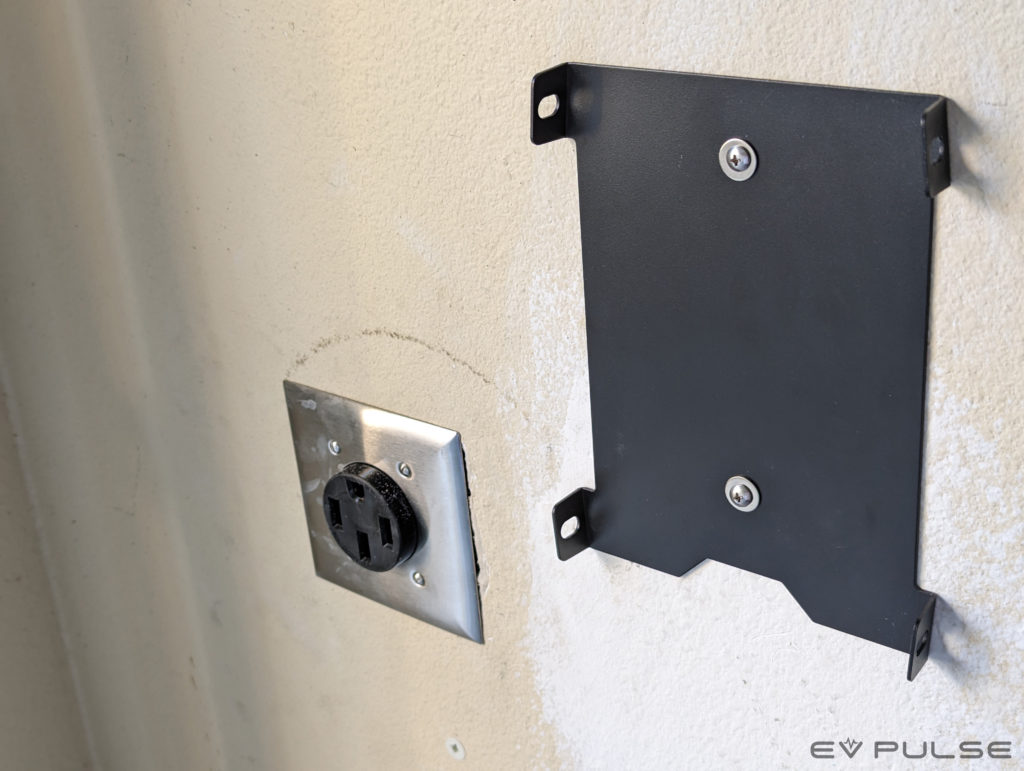What’s involved with installing a Level 2 electric vehicle charger? Well, it’s as simple as plugging in, or it can be as complicated as rewiring your house.
If you’ve made the leap and purchased an EV, congrats! A world of smooth, efficient and torquey motoring awaits. To ensure you live your best electric vehicle life, you probably want to install a Level 2 charger in your garage or carport. But before you head down that road, there are some things to be aware of. And right out of the gate, this can either be a dead simple operation or a complicated mess that literally costs thousands of dollars.
On the easy end of the spectrum, if you already have an appropriate power supply — like a NEMA 14-50 outlet — and it’s in a good location, you’re set. Just plug your charger of choice in and let your vehicle start absorbing all that sweet, succulent electricity. Of course, this assumes you bought a charger with a plug on it. Some units require hardwired connections, so be aware of that before purchasing.

One step up the difficulty ladder, if you’re not blessed with easily accessible 240-volt power, you’ll have to run a new line from your electrical panel to wherever you plan on juicing up your EV. If you’re super handy, this might be something you could tackle yourself, but most people will probably want to hire a qualified electrician, so they know the work is done safely and correctly.
Pricing for this sort of job absolutely will vary based on myriad factors, but it’ll likely cost at least a few hundred dollars beyond the price of the Level 2 charger itself, which you need to purchase if your vehicle didn’t come with one.
If you need to run a new 240-volt line you may also have to upgrade your electrical panel, that is, replace the main box and all the fuses or circuit breakers. This isn’t necessarily a terrible idea if your home is older; breakers can go bad over time and safety standards do change. You may also need a new panel if the existing one is full, if there isn’t enough room to add more breakers to accommodate new circuits — like a dedicated line for your EV charger. Overall, having a professional do the work — not that guy your cousin’s best friend knew back in high school — this job will likely cost a couple thousand bucks, so it’s not cheap.

Now, the worst-case scenario when installing a Level 2 charger is needing an electrical service upgrade. If your home is old, it may only have 30- or 60-amp service, which is not going to cut it. This is something you should be able to figure by looking at the number on the main circuit breaker. If your electrical service comes up short, your best bet is upgrading to 200 amps, which will give you plenty of breathing room for charging EVs while also providing space to grow in the future. And who knows? You may want to run a TIG welder or milling machine someday. Expect a service upgrade to cost several thousand dollars, though, again, there are many variables in play.
Installing a Level 2 EV charger can be super easy or a major expense. To recap, all you might have to do is plug the thing in and you’re good to go, but depending on what you purchased, your charger may have to be hardwired, which is a little more challenging. A step beyond that, certain drivers will have to run a new 240-volt line out to their garage or carport, which will cost you, while some homes will require a new power panel to accommodate a charger. Finally, older houses could need an entire electrical service upgrade, which is pretty much the worst-case scenario.
